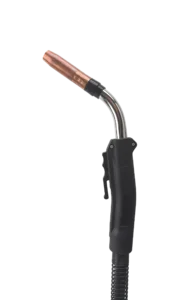Table of Contents
Togglemig welding patterns
MIG welding, also known as Gas Metal Arc Welding (GMAW), is a popular welding process used in various industries due to its versatility and efficiency. One important aspect of MIG welding is the use of different welding patterns, which can greatly impact the quality and strength of the weld. In this article, we will explore the different MIG welding patterns and their applications.
The “Back and Forth” or “Weaving” Pattern:
The back and forth, or weaving pattern, is one of the most commonly used MIG welding patterns. This pattern involves moving the welding torch in a zigzag motion while maintaining a consistent travel speed. The weaving pattern helps distribute heat evenly and ensures better fusion between the base metal and filler wire. It is suitable for welding thicker materials and can be used in various applications, including structural welding, fabrication, and shipbuilding.
The “Circle” or “Circumferential” Pattern:
The circle or circumferential pattern involves moving the welding torch in a circular motion while maintaining a steady travel speed. This pattern is commonly used for welding pipes, tubes, and other cylindrical structures. The circular motion helps achieve uniform penetration and fusion along the circumference of the joint. It is important to maintain a consistent diameter while using this pattern to ensure proper weld quality.
The “Stitch” or “Spot” Pattern:
The stitch or spot pattern involves creating a series of small welds or spot welds along the joint. This pattern is useful when welding thin materials or when precise control over heat input is required. The stitch pattern helps minimize distortion and prevents burn-through on thin materials. It is commonly used in automotive, sheet metal, and aerospace industries.
The “Figure 8” or “Whip” Pattern:
The figure 8 or whip pattern involves moving the welding torch in a continuous figure 8 motion while maintaining a consistent travel speed. This pattern is beneficial when welding fillet joints or when a wide weld bead is desired. The figure 8 motion helps distribute heat evenly and provides better control over the weld pool. It is commonly used in structural welding, construction, and heavy equipment fabrication.
The “Stringer” or “Straight Line” Pattern:
The stringer or straight line pattern is the simplest and most straightforward MIG welding pattern. It involves moving the welding torch in a straight line along the joint. This pattern is suitable for welding thin materials or when a precise, narrow weld bead is required. The stringer pattern is commonly used in automotive, sheet metal, and general fabrication applications.
The “J” or “U” Pattern:
The J or U pattern involves creating welds that resemble the shape of the letter J or U. This pattern is commonly used for fillet welds, especially in corner joints or lap joints. The J or U pattern helps ensure proper fusion and penetration in the joint while minimizing the risk of incomplete fusion or undercutting.
The “Continuous Fillet” Pattern:
The continuous fillet pattern involves creating a continuous weld along the entire length of the joint. This pattern is commonly used for fillet welds in applications where maximum strength and load-bearing capacity are required. The continuous fillet pattern provides excellent fusion and is often used in structural welding, heavy machinery, and bridge construction.
The “Multi-Pass” Pattern:
The multi-pass pattern involves making multiple passes over the joint to achieve complete fusion and proper penetration. This pattern is used when welding thicker materials that require multiple layers of weld metal. Each pass is made using one of the aforementioned patterns, such as the stringer or weaving pattern. The multi-pass pattern ensures the integrity and strength of the weld in heavy-duty applications.
The “Pulsed” Pattern:
The pulsed pattern is a specialized MIG welding technique that involves alternating between high and low current levels. This pattern is commonly used when welding thin materials or when precise control over heat input is required. The pulsed pattern reduces the risk of burn-through, minimizes distortion, and provides better control over the weld pool. It is often used in automotive, aerospace, and electronics industries.
The “Custom” or “Specialty” Patterns:
In addition to the standard patterns mentioned above, welders often develop custom or specialty patterns based on specific welding requirements. These patterns may involve a combination of different motions or variations of existing patterns. Custom patterns are used in specialized applications where specific weld characteristics, such as aesthetics or joint geometry, are crucial.
Understanding the different MIG welding patterns and their applications is essential for achieving high-quality welds in various industries. Whether you are welding thick structures, thin sheets, or cylindrical components, choosing the right welding pattern is crucial for obtaining strong and reliable welds. By utilizing the appropriate MIG welding pattern for each application, welders can ensure optimal weld quality, efficiency, and durability.


